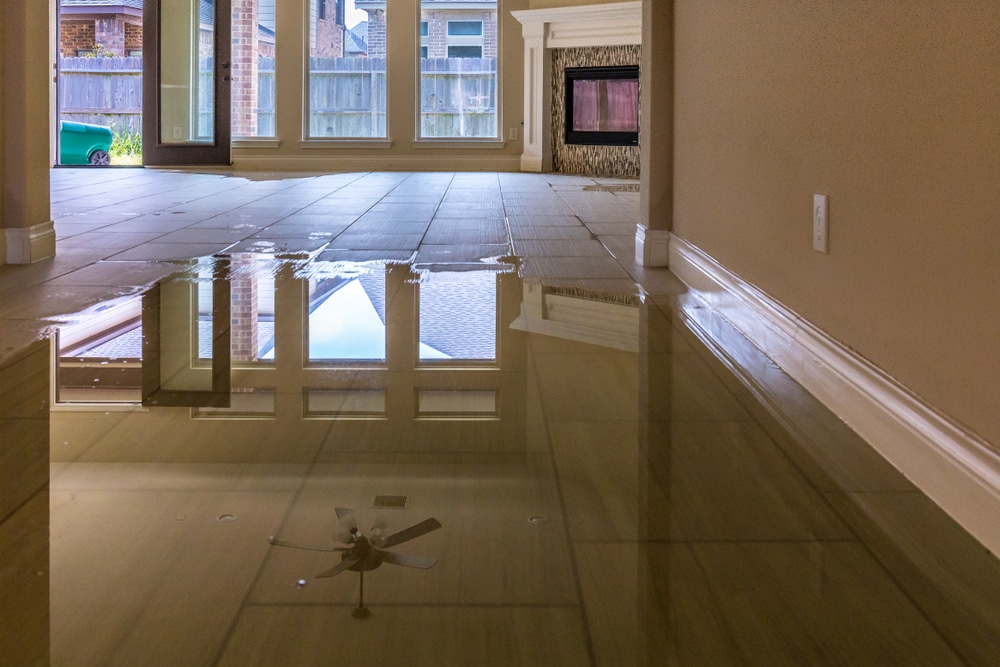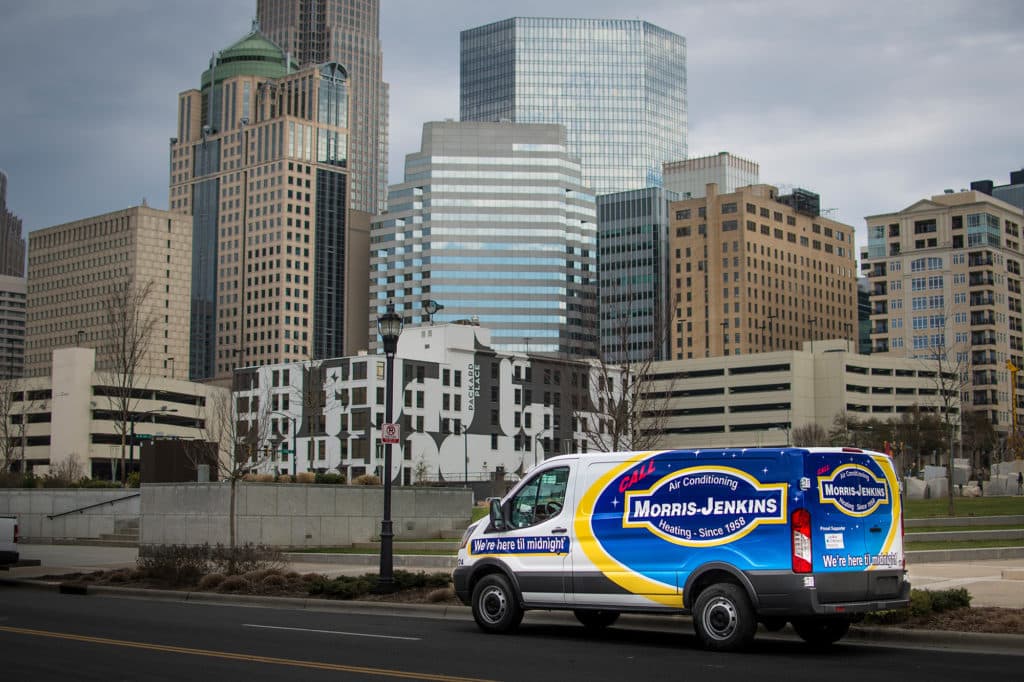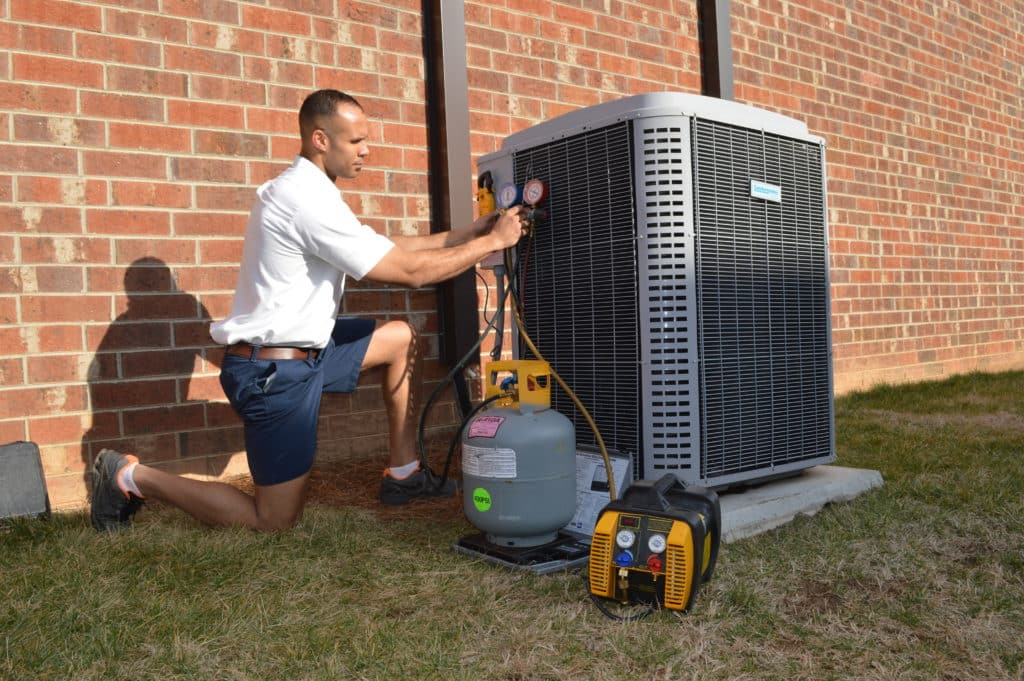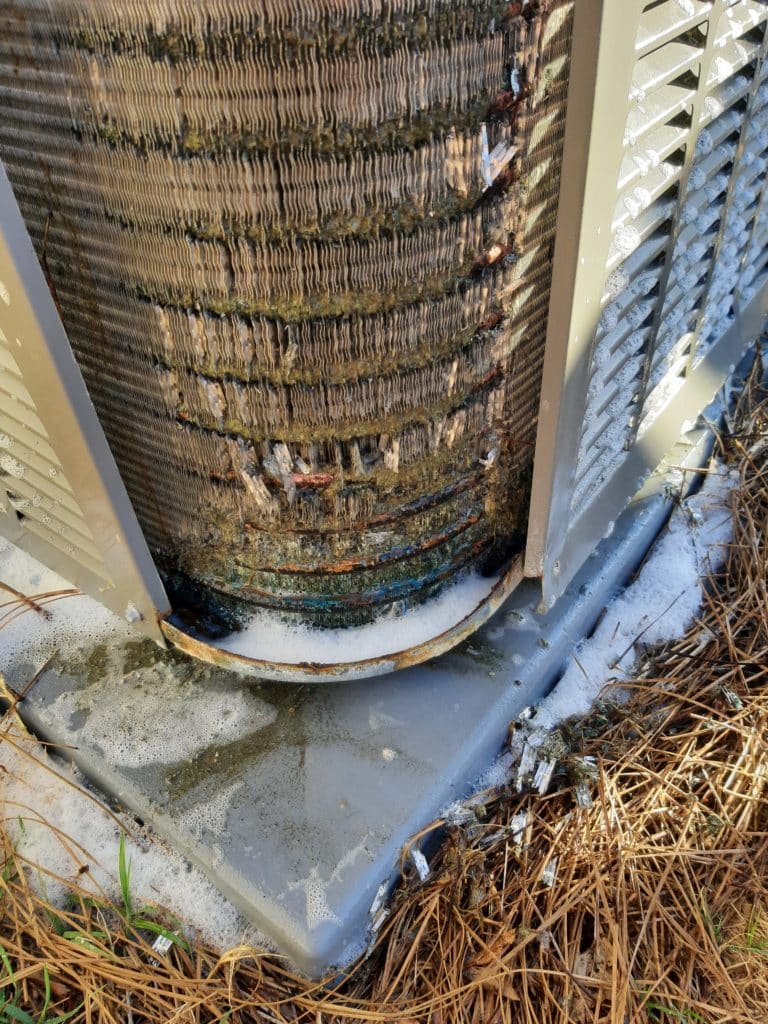Leaking pipes are stressful enough on their own, but you can end up making yourself feel worse when you start Googling what to do about it. There are a bunch of ways plumbers can fix your problematic pipes: traditional trenching, pipe bursting, and trenchless pipe lining. It can feel overwhelming trying to figure out which is best!
Don’t panic! Not only does Morris-Jenkins offer all these great pipe replacement options, but we’ll make sense of all this confusing plumbing talk. And when you call us out to help with your pipes, your Morris-Jenkins plumber will help show you the best options for your home. After all, every home is unique!
What Is Traditional Trenching?
For years, the only way plumbers could replace your broken and leaking pipes would be to dig a big trench through your yard to pull out the old pipes and replace them with new. If the leak was in a drain line in your house, that might mean the plumber would have to cut holes in your walls, ceiling, or floors. And if your home is on slab (a lot in the greater Charlotte area are!), that also means they’d be taking a jackhammer to your floors. It’s a mess no one wants!
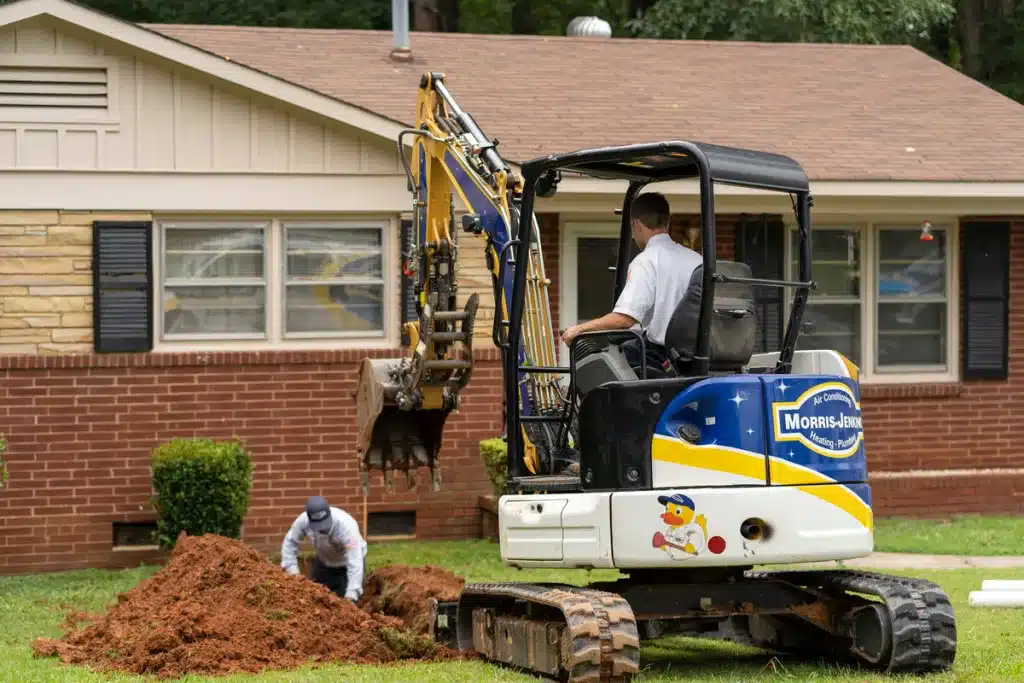
Nowadays, there are some less invasive options out there: pipe bursting and trenchless pipe lining. However, neither of these can be used if you have a belly in your pipes. A belly is when your pipes sag somewhere underground. Typically, pipes sit at a consistent downward slope, but if there’s an area that’s sagging, stuff can get stuck there. This can only be fixed by digging down to the belly and laying new pipe at a proper pitch. You probably have no idea if your pipes have a belly, and that’s where our drain camera comes into play! Before our plumbers help you pick a trenched or trenchless pipe replacement option, they’ll send a drain camera through your pipes to see exactly what we’re working with.
Trenchless Sewer Line Repairs Vs. Traditional
Plumbing can get pretty confusing if you’ve never worked in this industry before! If you’re asking how do you compare trenchless sewer repair vs traditional sewer repair, you’re in the right place. We’re gonna break this down easy. Your sewer lines are underground. Traditional pipe repair is when a plumber comes out and digs a trench through your yard in order to get to those old, broken pipes. Plumbing has advanced a lot over the years, and now there are some newer options that don’t require a trench in your yard! It’s called trenchless pipe repair. There are two main trenchless sewer line repair methods: pipe bursting and pipe lining.
How Does Pipe Bursting Work?
Instead of digging up a huge trench in your yard, pipe bursting can be done with only two access points. This means your driveway and garden can be kept intact!

When we come out for a pipe bursting appointment, we’ll dig two holes in your yard to reach your leaky pipe. Using our equipment, we’ll send a device through your old pipe. This device has a head with powerful blades that work to cut through and expand your old pipes. As this device snakes through, it pushes and bursts through the cut pipe. But wait, here’s our favorite part… It’s actually pulling a brand new pipe right along behind it! This means that as it’s breaking apart your old pipe to make room, it’s placing your new pipe at nearly the same time. And this new pipe is totally seamless!
When Is Pipe Bursting an Option?
Remember when we explained what a pipe belly is? We can’t do pipe bursting if your current pipes have that. In fact, we can’t do either trenchless pipe replacement option if your pipes have a belly.
Pipe bursting is a great proactive option! Trenchless pipe repair is always preferrable to traditional pipe repair (trenching), but it isn’t always an option. If you let your pipe problems get bad enough, bellies can form and traditional excavation (trenching) might become your only option. Instead of risking that, call us out sooner for pipe bursting so we can get your plumbing working right again AND protect your yard!
Check with your plumber to see if this trenchless sewer line repair method works for your home!
How Does Trenchless Pipe Relining Work?
Plumbing methods have really come a long way, and this wild technique is proof! Let’s say you have a deteriorated drain/sewer pipe—it’s not completely destroyed, but you definitely need to replace it. Traditionally, your only option would be to break into the walls, ceilings, or floors of your house to get the old pipe out and put a new one in. Not with trenchless pipe lining! However, the longer you wait, the worse your pipes are gonna get. If they’re too damaged, trenchless pipe lining won’t be an option. That’s why it’s best to call sooner rather than later when you notice issues with your home’s plumbing!
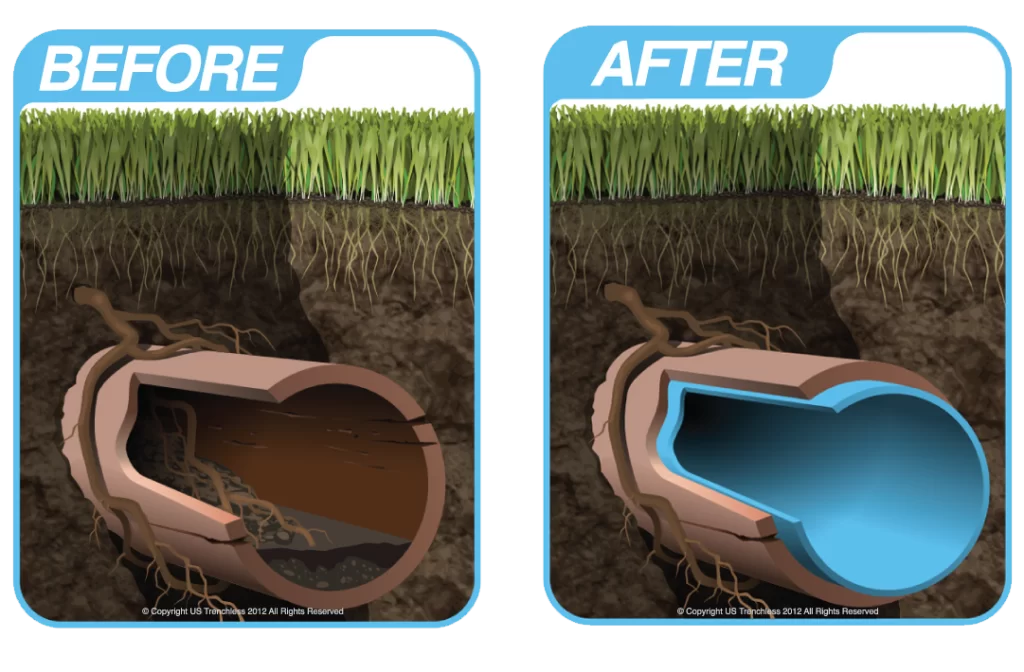
At the start of a trenchless pipe lining appointment, your plumber will send a drain camera through your pipes to look at extent of the damage. They’ll use a jetter to clean out the inside of the damaged pipe to make sure any debris and plant roots are out of the way. We’ll then use a high-speed milling machine to rough up the inside of the pipe—kind of like how you would sand a table before painting it! Then, your plumber will send a bladder through your pipes. This bladder has a pipe lining around it, and the lining is coated with epoxy. Once everything is in place, we’ll inflate the bladder to help press the lining around the inside walls of your old pipes. It basically turns your old, damaged pipes into brand new ones! This lining lasts around 50 years, so your family will be set for a long time!
When is Trenchless Pipe Lining an Option?
Just like with pipe bursting, trenchless pipe lining isn’t an option if your pipe has bellies. However, pipe lining is a trenchless sewer line repair method specifically for sewer and drain lines only. We can use it to repair sections of pipe as small as an inch and a half or as large as an entire pipe.
Which Pipe Repair or Replacement Option Is Best?
If you’ve been dealing with drain problems, sewer backups, or leaking drain lines, you don’t wanna waste time waiting to repair it. Pipes don’t repair themselves, and if anything, they’ll break down more and more the longer you wait. Don’t risk pipe bellies or fully collapsed pipes! Trenchless pipe replacement and installations are great ways to get your plumbing back to normal, but these methods don’t work if you wait too long to call for help.
Morris-Jenkins can get your pipes working like new faster than anyone! And we’ve got all these great methods to help your family. The only way to know for sure which option is best for your family is to talk to a professional. We have drain cameras that can take a look at the inside of your pipes to see exactly what options are right for you. If your pipes aren’t in too bad of shape, something like trenchless pipe lining might do the trick! If you need new pipes, maybe pipe bursting is a good fit. The only way to know for sure is to have a plumbing expert out for an evaluation– this isn’t something you’ll be able to gauge yourself.
All of this talk about trenchless sewer line repairs vs traditional pipe repairs can be pretty stressful. We get that! After all, it’s your home we’re talking about, and that means a LOT to you! Our plumbers are experts who work with pipes every day, so they’ve seen just about everything. And that means they’ll know exactly how to take care of your home’s plumbing to get things working right again!
Let’s see if pipe bursting or trenchless pipe lining is right for your home!
Ready to talk to one of our experts about getting your pipes fixed? One of our plumbers will come out to your home to see if trenchless sewer repair vs traditional sewer repair is the better fit for your home!
